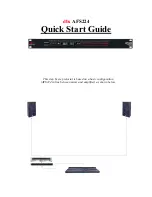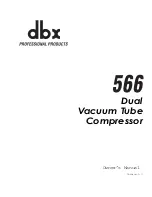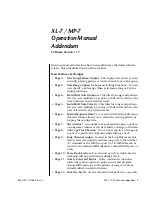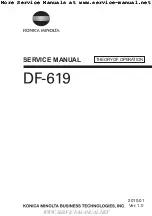
Transducer Mount Position
Unobstructed View
: The jack plate gives the
transducer safe distance from the motor and
turbulence. The Side Imaging has a clear view
side-to-side.
Obstructed View
: The transducer is too close
to motor turbulence, and the Side Imaging view
is blocked by the motor. The view cannot
extend from side-to-side.
Side Imaging® Transducer
4
532118-1_B
2. Hold the template on the transom of the boat in the location you have selected. Align the template
vertically, matching the lower edge of the transom with the bottom corner of the template.
NOTE
: If your propeller moves clockwise as the boat moves forward (as you're facing the stern of the boat from
behind), mount the transducer on the starboard side, and use the bottom left corner of the template. If your
propeller moves counter-clockwise as the boat moves forward (as you're facing the stern of the boat from
behind), mount the transducer on the port side, and use the bottom right corner of the template.
3. Continue to hold the template on the transom of the boat, and use a pencil or punch to mark where to
drill the three mounting holes shown on the template.
4. Using a 5/32" bit, drill the three holes only to a depth of approximately 1".
NOTE
: On fiberglass hulls, it is best to use progressively larger drill bits to reduce the chance of chipping or
flaking the outer coating.
5. Use a marine-grade silicone sealant to fill the drilled holes, especially if the holes penetrated the
transom wall.
6. Align the metal mounting bracket with the mounting holes. The center slot of your mounting bracket
should be above the two outer slots. Insert the three 1" flat head wood screws into the drilled holes, but
do not completely tighten.
NOTE:
The mounting bracket and all other hardware supplied is top quality stainless steel for maximum strength
and corrosion protection.
4.
Assemble the Transducer
In this procedure you will attach the pivot to the transducer using the hardware provided.
1. Attach the pivot to the transducer body as shown in the illustrations using the square nuts, toothed
washers, and two 1/4–20 x 5/8" machine screws. The square nuts will be prevented from rotating by the
pocket in the back of the pivot. The toothed washers must fit on the inside of the transducer ears,
between the pivot and the ears.
NOTE:
An Allen wrench is provided which fits all of the 1/4–20 screws, but do not fully tighten the screws at this time.
5.
Attach the Transducer to the Bracket
1. Slide the assembled transducer into the metal bracket from the bottom, aligning the large hole at the
top of the bracket with the hole in the pivot.
2. Insert the headed pin through the pivot holes in the bracket and pivot. The headed pin can be inserted
from either side of the bracket.
3. Place the nylon washer over the opposite end of the headed pin. Place the stainless washer over the
1/4–20 x 5/8" screw threads, then insert into the opposite end of the headed pin and finger tighten only.
The screw has a thread locking compound on the threads to prevent loosening, and should NOT be fully
tightened until all adjustments are made.
6.
Running Position Adjustment
The running position of the transducer is now completely adjustable. Subsequent adjustment may be
necessary to tweak the installation after high speed testing. The mounting bracket allows height and tilt
adjustment; the machine screws allow angle adjustment.
Side Imaging® Transducer
3
532118-1_B
If you have installed or are planning to install a second transducer in addition to this Side Imaging transducer,
you must determine which transducer will be used as the primary source for traditional 2D sonar when
operating the boat at high speeds (up to 65 mph). There are special mounting requirements for the Side
Imaging transducer depending on if it will be in the water or out of the water during high-speed operation.
•
If you plan to use the Side Imaging transducer as the primary source for traditional 2D sonar and
Down Imaging sonar during high speed operation (up to 65 mph)
, mount the transducer at least 15"
from the center of the engine with an unobstructed view on both sides of the transducer (see
Side
Imaging
and the illustration
Transducer Mount Position
).
•
If you plan to use a second transducer (such as the XNT 9 20 T) as the primary source for
traditional 2D sonar only during high-speed operation (up to 65 mph)
, mount the Side Imaging
transducer where it will not be in direct water flow. For this installation, you may install the transducer
less than 15" from the center of the engine. Review the following mounting alternatives:
• The Side Imaging transducer can be mounted on or near the centerline of the boat and
higher on the transom to prevent direct contact with water flow under the boat at high
speeds. Confirm that the transducer is low enough on the transom to be submerged in
the water at low speeds. It should not come into contact with the motor when it is
raised or lowered.
NOTE:
Mounting the Side Imaging transducer higher on the transom should not create
turbulence that affects the engine’s water intakes. Contact your dealer to verify your
individual boat setup.
• The Side Imaging transducer can be mounted to the jack plate. Contact your dealer for
more information about the brands of jack plates that will accommodate this type of
installation.
NOTE:
A Y-cable or transducer switch may be required to connect the Side Imaging transducer to the second
transducer. The Y-cable and transducer switch require separate purchases. To purchase accessories or any
additional equipment, go to
humminbird.com
or contact Customer Service at
1-800-633-1468
.
Side Imaging:
The Side Imaging transducer has some special requirements because of its side viewing
capabilities:
• The Side Imaging transducer must NOT have anything obstructing the ‘view’ of the side looking beams.
For example, nothing can be in the line of sight of these beams (not a hull, motor, additional
transducer, etc.). See the illustration
Transducer Mount Position
.
NOTE:
You may need to tilt the motor up and out of the way when using the side looking beams.
• In order for the side beams to be displayed accurately, the transducer must be mounted parallel with
the waterline. This positioning allows the beam elements to point straight down without deadrise
adjustment.
NOTE:
Rough seas, high speed, and air bubbles can also affect the reading of the Side Imaging transducer.
3.
Mount the Bracket
In this procedure you will mount the bracket, using the mounting template provided as a guide. This
template allows you to mark where the mounting holes should be drilled.
1. Cut out the transducer mounting template from this sheet. Match the mounting bracket screw slots to
the template screw slots.
Side Imaging® Transducer
2
532118-1_B
3. Hold the transducer in the water over the side of the boat to confirm proper operation. If the transducer
is working properly, you should be able to see the bottom on the control head display. The bottom image
should be relatively strong and there should be detailed structure on the display.
4. After confirming proper operation, unplug the transducer cable connector from the control head or black
box sonar.
2.
Locate the Transducer Mounting Position
You must first determine the best location on the transom to install the transducer.
Turbulence:
It is very important to locate the transducer in an area that is relatively free of turbulent water.
Consider the following to find the best location with the least amount of turbulence:
• As the boat moves through the water, turbulence is generated by the weight of the boat and the thrust of
the propeller(s) - either clockwise or counter-clockwise. This turbulent water is normally confined to areas
immediately aft of ribs, strakes or rows of rivets on the bottom of the boat, and in the immed iate area of
the propeller(s). Clockwise propellers create more turbulence on the port side. On outboard or
inboard/outboard boats, it may be best to locate the transducer at least 15" to the side of the propeller(s).
See
High-Speed Operation
for details.
• The best way to locate turbulence-free water is to view the transom while the boat is moving. This
method is recommended if maximum high-speed operation (up to 65 mph) is a high priority. If this is
not possible, select a location on the transom where the hull forward of this location is smooth, flat
and free of protrusions or ribs.
• On boats with stepped hulls, it may be possible to mount the trans ducer on the step. Do not mount the
transducer on the transom behind a step to avoid popping the transducer out of the water at higher
speeds. The transducer must remain in the water for the control head to maintain the sonar signal.
• If the transom is behind the propeller(s), it may be impossible to find an area clear from turbulence,
and a different mounting technique or transducer type should be considered.
• If you plan to trailer your boat, do not mount the transducer too close to trailer bunks or rollers to avoid
moving or damaging the transducer during loading and unloading of the boat.
High-Speed Operation (up to 65 mph):
Side Imaging sonar is best performed at boat speeds from .5 to 8 mph,
and is not recommended for high-speed operation as gaps between strips of information can appear. However,
the transducer can support traditional 2D sonar and Down Imaging™ sonar at higher speeds (up to 65 mph).
NOTE:
Traveling over 65 mph with the transducer in the water is not recommended with the transom mount
transducer, as damage might occur. If you require a high-speed application (above 65 mph) and cannot find a
transom mount location that will work for your boat hull, a different mounting technique or transducer type
should be considered. See the FAQ (Frequently Asked Questions) section of our Web site at
humminbird.com
or
call Customer Service at
1-800-633-1468
.
Level
Find a turbulence-free location that is not in line with trailer bunks or rollers.
Side Imaging® Transducer
1
532118-1_B
Thank You
Thank you for choosing Humminbird®, the #1 name in marine electronics. Humminbird has built its
reputation by designing and manufacturing top-quality, thoroughly reliable marine equipment. Genuine
Humminbird accessories offer the opportunity to upgrade and expand the capabilities of your Humminbird
product.
NOTE:
Your transducer may not look exactly like the transducer shown in the illustrations, but it will mount in
exactly the same way.
Your Humminbird is designed for trouble-free use in even the harshest marine environment. In the unlikely
event that your Humminbird does require repairs, we offer an exclusive Service Policy. For complete details,
see the separate warranty card included with your unit.
Contact Humminbird Customer Service at
humminbird.com
or call
1-800-633-1468
.
Installation Overview
Following are instructions for the installation of this accessory. Before you start the installation, we encourage
you to read these instructions carefully in order to get the full benefit from your Humminbird accessory.
Customer Service:
If you find that any items are missing from your installation kit, visit our Web site at
humminbird.com
or call Customer Service at
1-800-633-1468
.
Supplies:
In addition to the hardware supplied with your transducer, you will need a powered hand drill and
various drill bits, various hand tools, including a ruler or measuring tape, level, pen or pencil, safety glasses
and dust mask, and marine-grade silicone sealant.
Installation
There are a number of ways to install a transducer on your boat. The transom mount installation provides the
following:
• Least loss of signal since the transducer is mounted outside the boat hull.
• Allows adjustment of both running angle and depth after the transducer is mounted, which enables
you to tune the installation for best results.
• The mounting hardware is designed to pivot the transducer body out of the way should the boat strike
debris in the water, or when trailering.
1.
Test the Transducer Prior to Installation
Prior to installation, test the transducer to make sure that no damage occurred during shipping.
1. Connect the transducer cable connector to the control head or black box sonar (depending on your
system configuration).
NOTE:
If using a black box sonar, confirm it is connected to the control head.
2. Power on the control head. Select a sonar view to display on-screen.
NOTE:
See your control head operations manual for more information.
NOTE:
Due to the wide variety of hulls, only general instructions are presented in this installation guide. Each
boat hull represents a unique set of requirements that should be evaluated prior to installation. It is important to
read the instructions completely and understand the mounting guidelines before beginning installation.
Transom Mounted Transducer
Stepped Hull
rib
step
Areas of Possible Turbulence
rivets
transom
strakes hull
Attaching the Bracket
Deadrise
deadrise angle
Attaching the Transducer to the Bracket
stainless washer
(fits over
screw threads)
headed pin
Allen wrench
nylon washer (fits
over headed pin)
screw
metal bracket
pivot
Inserting the Square Nuts
square
nuts
pivot
toothed
washer
transducer
ear
Attaching the Pivot
machine
screw
Side_Imaging_Transducer_IG_532118-1_B_8 Pager Install Guide 11/29/15 10:20 AM Page 1


























